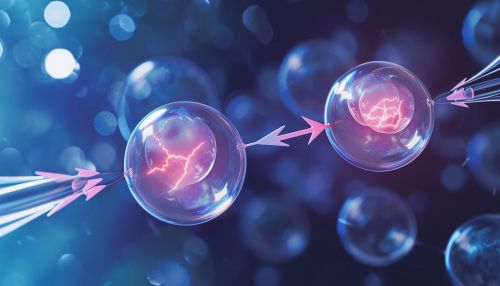Radical pair
Introduction
A radical pair is a pair of molecules, each of which has an unpaired electron, making them radicals. These pairs are formed in chemical reactions and play a crucial role in various fields such as chemistry, biology, and physics. The study of radical pairs and their reactions is known as radical pair mechanism.


Formation of Radical Pairs
Radical pairs are typically formed through the process of homolytic cleavage, where a bond between two atoms is broken evenly, resulting in two radicals. This process can be initiated by various factors such as heat, light, or radiation.
Properties of Radical Pairs
Radical pairs possess unique properties that distinguish them from other molecular pairs. One of these properties is their high reactivity, which is due to the presence of unpaired electrons. These unpaired electrons are highly reactive and seek to pair up with other electrons, leading to various chemical reactions.
Role in Chemical Reactions
Radical pairs play a key role in many chemical reactions, particularly those involving free radicals. These reactions often involve the formation, interaction, and annihilation of radical pairs. The study of these reactions provides valuable insights into the mechanisms of various chemical processes.
Radical Pair Mechanism
The radical pair mechanism is a theory that explains the behavior of radical pairs in chemical reactions. According to this theory, the spins of the unpaired electrons in a radical pair can influence the outcome of the reaction. This mechanism has been used to explain various phenomena in chemistry and biology, such as the magnetic field effects on chemical reactions and the avian magnetoreception.
Applications of Radical Pairs
Radical pairs have a wide range of applications in various fields. In chemistry, they are used to study reaction mechanisms and to develop new synthetic methods. In biology, they are used to understand processes such as photosynthesis and magnetoreception. In physics, they are used to study quantum effects in biological systems.
Conclusion
Radical pairs are an important concept in various scientific fields. Their unique properties and behaviors make them a subject of interest for researchers. Understanding the radical pair mechanism and its implications can provide valuable insights into various chemical, biological, and physical phenomena.
